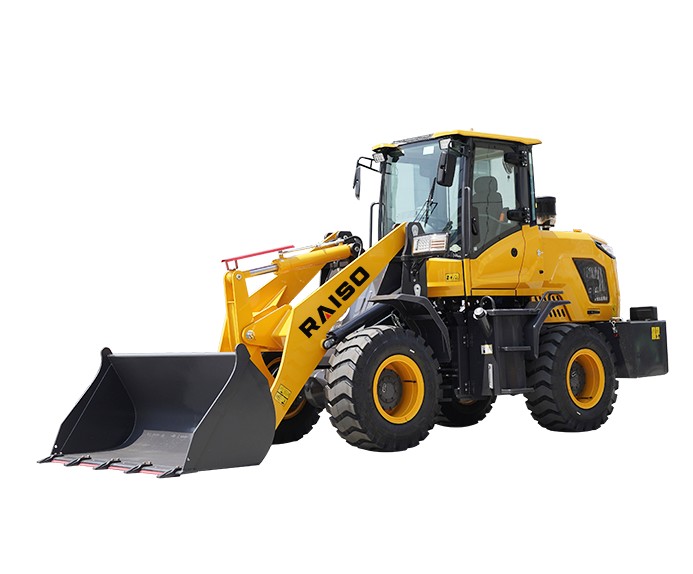There are significant differences between telescopic loaders and wheel loaders in core functions, structural design, application scenarios and technical characteristics. The specific differences are as follows:
1. Differences in core functions
a. Traditional loaders
With short-distance material handling, loading and unloading as core functions, they rely on fixed-length booms and buckets to complete operations. For example, in scenarios such as loading sand and gravel at construction sites and transporting ore at mines, their operating range is limited by the length of the boom, and the position usually needs to be adjusted by the mobile device body.
b. Telescopic loaders
The operating range is expanded through the telescopic boom, which can not only complete the short-distance operations of traditional loaders, but also cover higher and farther operation requirements. For example:
High-altitude operations: The lifting height can reach 7-11 meters, which is suitable for loading and unloading high-rise shelves in warehouses and high-rise material handling at construction sites;
Long-distance operations: After the boom is extended, it can cross obstacles (such as small ditches and steps) to directly load and unload goods, reducing the frequency of equipment movement;
Narrow space operations: After the boom is retracted, the overall length of the equipment is shortened, which is suitable for flexible operation in narrow construction sites or indoor environments.
2. Structural design differences
a. Traditional loaders
Boom structure: fixed length, bucket lifting and flipping controlled by hydraulic cylinders;
Chassis design: mainly four-wheel drive, emphasizing stability and traction;
Accessory compatibility: usually only supports bucket replacement, limited functional expansion.
b. Telescopic loader
Boom structure: adopts multi-section arm hinge/guide connection, and realizes free extension and retraction through hydraulic or electric system, maintaining high strength stability during lifting (such as telescopic arms made of high-strength steel are still strong when lifting 7 meters);
Chassis design: some models are equipped with all-wheel steering or crab steering mode to improve maneuverability in narrow spaces;
Accessory compatibility: supports rapid switching of more than ten types of accessories (such as forks, wood grabbers, breakers, etc.), realizing "one machine for multiple uses". For example, the same equipment can complete tasks such as sand and gravel loading, building materials handling, and site cleaning.
3. Differences in application scenarios
a. Traditional loaders
Construction sites: earthwork excavation, material handling;
Mines: ore loading and transportation;
Ports: container loading and unloading;
Agriculture: farmland leveling and material handling.
b. Telescopic loaders
Construction and municipal engineering: handling building materials, lifting heavy objects, site leveling, and adapting to narrow construction sites;
Logistics and warehousing: fast loading and unloading of goods, improving logistics efficiency (such as loading and unloading of high-bay warehouse shelves);
Emergency rescue: flexibly adjust the arm length to transport materials to complex terrain (such as earthquake ruins, flood areas);
Agriculture: transporting materials such as hay and feed to achieve higher stacking and loading heights (such as horse farm operations);
Special environments: Middle East high temperature resistant (55℃) anti-dust design, Nordic version equipped with fuel preheating system.
4. Differences in technical characteristics
a. Traditional loaders
Power system: mainly diesel engines, with a wide power coverage range;
Hydraulic system: control bucket lifting and flipping, moderate action response speed;
Intelligence level: Some high-end models are equipped with fault self-diagnosis function, but the overall intelligence level is low.
b. Telescopic loader
Power system: Some export versions are equipped with engines that meet the Euro IV/V emission standards, taking into account both power and environmental protection;
Hydraulic system:
Load-sensitive hydraulic system: Achieve flow distribution accuracy of ±2%, with electro-hydraulic proportional control technology, the action response speed is 0.3 seconds faster than similar European products;
Intelligent control: Through finite element analysis to optimize the boom structure, the deadweight is reduced by 15%, and the maximum lifting force reaches 5.8 tons;
Intelligence and safety:
Safe load indicator: Feedback the loader capacity through the indicator light to prevent overloading;
Fault self-diagnosis system: Integrated 7-inch LCD screen, real-time monitoring of equipment status and warning of faults;
Cab design: The fully sealed pressurized cab controls the noise below 72 decibels, in line with EU standards.
Welcome to contact us by leaving a message. We will get in touch with you as soon as we receive your message

